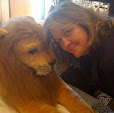My first book of 2014 is Jo Baker's Longbourn, which tells the stories of the servants who wait on the Bennet family of Jane Austen's Pride and Prejudice.
I found the world of the servants to be fascinating and the characters interesting. Sarah, the main character, is the orphan daughter of weavers who died when she was young, and she was taken in hand by the Bennet's housekeeper, Mrs. Hill, and raised and taught how to be a maid in a gentleman's house. Polly, the younger of the two maids, was a poorhouse child. James, the footman, was a laborer who joined the army and fought in Spain. The third section of the book tells his story, which I found extremely interesting. Sarah is initially attracted to Ptolemy Bingley, a black footman of Mr. Bingley's, who aspires to owning a tobacco shop in London.
A few years ago I read Lady's Maid, by Margaret Forster, which is a fictional take on the maid of Elizabeth Barrett Browning, and I think Longbourn provides an equally compelling look at what continues to be an underexposed and under-appreciated strata of society. I was pleasantly surprised by how Longbourn also served as a vehicle for Baker to present her interpretation of PandP characters. For example, when Elizabeth's marriage to Mr. Darcy is fast approaching, she reveals a nervousness about leaving home and I earmarked the passage in which her maid, Sarah, muses on this:
Perhaps it was not an easy thing, to be so entirely happy. Perhaps it was actually quite a fearful state to live in—the knowledge that one had achieved complete success.Austen famously doesn't often describe clothes or furniture or houses, beyond a general impression they give--Pemberley excepted--so I thought Baker's description of Mrs. Bennet's dressing room to be quite insightful and revealing about both Baker's Mrs. Hill and Austen's Mrs. Bennet.
Mrs. Bennet's dressing room: her inner sanctum, her retreat from the pressing demands of family life; a place of bulging upholstery and swags and cushions and drapes and Turkey-rugs; a place heaped with worn-once gowns, abandoned shawls, spencers, pelisses and bonnets; a place of rose-petal mustiness, of striped and flowered wallpaper, of surfaces trinked out with all the porcelain her pin money could supply, and all the paper flowers and shellwork and scrollwork and embroidered panels and painted china her daughters' nimble fingers could furnish, and all of it decomposing now and peeling and gathering dust, and driving Mrs. Hill's ordered, governable heart to distraction.Austen's works illustrate the narrow options available to women; Longbourn goes a step further and shows how poor, working women had even fewer options. The one thing they had was the expectation that their lives would be spent working. I can relate to that in a way I could never relate to the life of a genteel woman of the time.
I also thought that Baker stayed very true to a strict reading of PandP, with her portrayal of Mr. Bennet being the only one that veered off strict canon. Some might argue that Elizabeth was portrayed as less than saintly, but then she never claimed to be as good as Jane anyway! Baker also provides good backstory info on villainous Mr. Wickham, and provides a very refreshing view of Mr. Collins and the long disparaged Charlotte Lucas.
Be forewarned, this is not a retelling of Pride and Prejudice. Mr. Darcy barely figures in the story, and we see none of the romance between Darcy and Elizabeth or Bingley and Jane. But that's okay, they have a wonderful book published two hundred and one years ago. Longbourn tells the story of Sarah and Polly, James and Mrs. Hill, and I'm glad that they finally have their day in the sun.
This book is part of my Historical Fiction Reading Challenge.


I'm happy you reviews this Jane. I do want to read it. I guess nothing will ever replace P&P.
ReplyDeleteI haven't read any of the Austen continuations, but I am interested in this one. It's clear from P&P that Mrs. Hill knows pretty much everything that goes on in the family. I think she is the only servant named though.
ReplyDeleteTaking a literary universe and and telling it from the point of view of the servants is a neat idea.
ReplyDeleteThough under appreciated up until now, stories of life from the point of view of domestic servants is very popular as of late.
I just finished up Charles Dickens's Bleak House. Though not the main focus of the book, a fair number of pages were devoted to domestic servants and their family. That was a very early version of this trend!
I have my issues with Dickens, but he did portray a variety of servants in his stories, which is to his credit.
DeleteI'd forgotten about this book. Thanks for the reminder. It's one I definitely want to read.
ReplyDeleteOh I am going to like this one a lot!
ReplyDeleteGreat review, Jane! I really want to read this now. I've been hearing around about it, but yours is the first review I've read. Wonderful!
ReplyDeleteHi Jane,
ReplyDeleteDo you suppose that the success of the Downton Abbey series, with its inclusion of the servants in the plot lines, helped pave the way for a book like this to see the light of publishing day?
-Jay
My daughter received this one for Christmas and loved it… can't wait to borrow it!
ReplyDelete